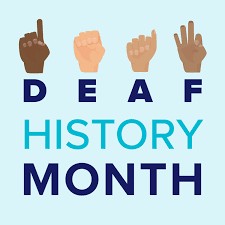By Rachel Instone
July 26th marks the annual anniversary of the Americans with Disabilities Act being signed into law in 1990. This legislation ensures access to economic and civic opportunities for disabled Americans.
Some changes that came about as a result of the law:
- The addition of accessibility enhancements such as elevators, ramps, and automatic doors provide equitable access to schools, stores, and public venues of all kinds.
- Increased education of American Sign Language expanded access to sign language interpreters for the hearing impaired.
- Large print books, magnified readers, orated exams, and audio description devices allow vision-impaired students to stay in school.
Though most people easily associate disability rights with mobility issues, 74% of Americans who live with a severe disability do not use mobility aids such as wheelchairs, canes, or walkers. Disability cannot be determined solely by whether or not a person uses assistive equipment. This creates the category of invisible disability. Invisible disabilities include any conditions that limit daily activities to varying degrees, which may include chronic pain, fatigue, dizziness, cognitive dysfunctions, brain injuries, learning differences and mental health disorders, as well as hearing and vision impairment.
Personal perspective
I have an invisible disability. I have a chronic condition that affects the muscle tissue in my body. Essentially, my body has a hard time building connective tissue, and connective tissue is what makes up all of your organs, joints, and muscles. This causes problems such as arthritis, asthma, and chronic pain.
Not all people with a chronic illness identify as disabled, but I have found this label helpful. After being diagnosed with this illness, I initially had a hard time advocating for myself to get the accommodations I needed. I had a 504 plan in school (thanks to the ADA!) that gave me permission to use the elevator and be excused from certain gym class activities. I initially felt embarrassed to get this special treatment, but once I started utilizing accommodations, I realized how helpful they actually were. I didn’t realize how out of breath I was getting going up the stairs… because I was always out of breath. I didn’t realize how bad my pain had been… until I didn’t have that pain anymore. By identifying as disabled, I give myself the grace to accept accommodations when needed without guilt or shame.
Media recommendations
Media that specifically address the ADA
- ADA video archive https://archive.ada.gov/videogallery.htm
- Watch Crip Camp on Netflix
- Documentary, all disabled people representing themselves
- Watch Music Within on Max
- An abled actor portraying a disabled character
- This is a dramatization of the real-life story of Richard Pimentel. Though the main role is portrayed by an abled actor, the actor playing him spent time with Richard in order to make the character as accurate as he could.
Media with disabled representation
- Watch The Peanut Butter Falcon on Amazon Prime
- The actor has Down syndrome
- Watch Rising Phoenix on Netflix
- Documentary, all disabled people representing themselves
- Watch Special on Netflix
- The actor has cerebral palsy



0 Comments